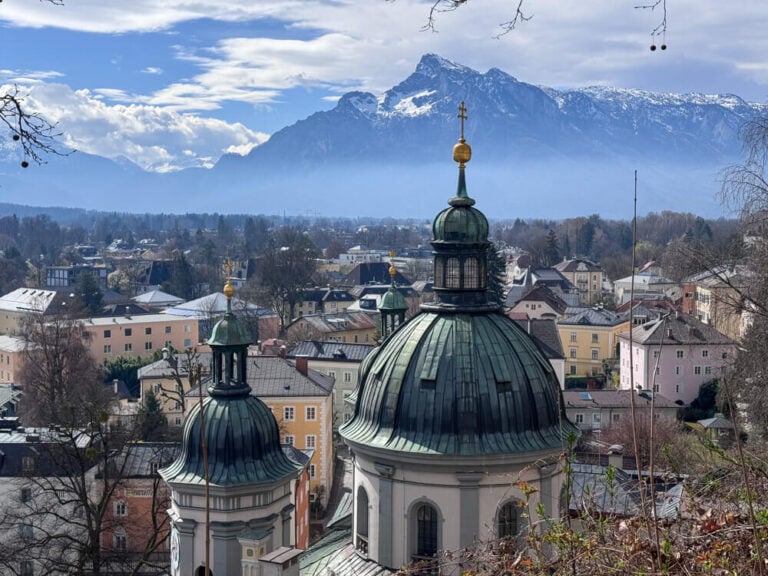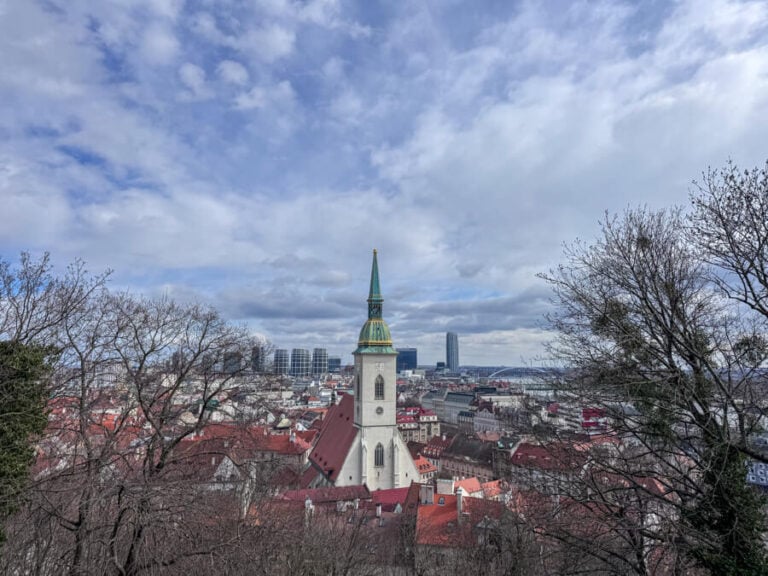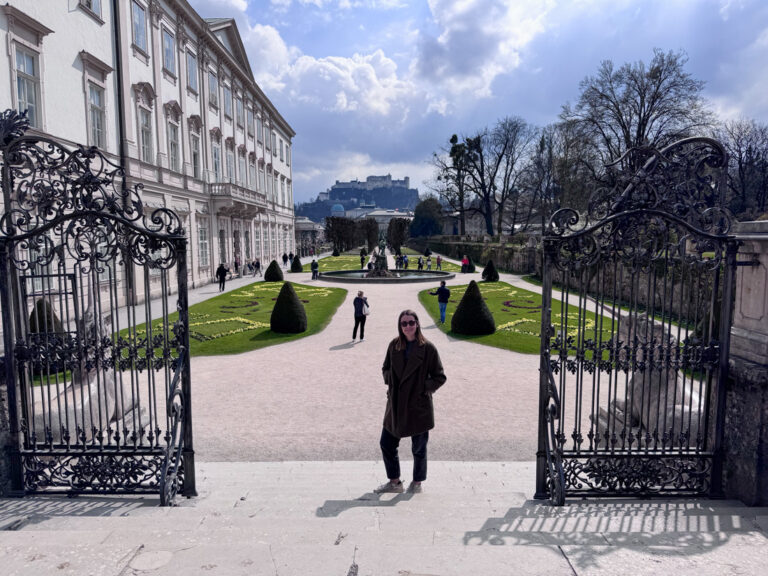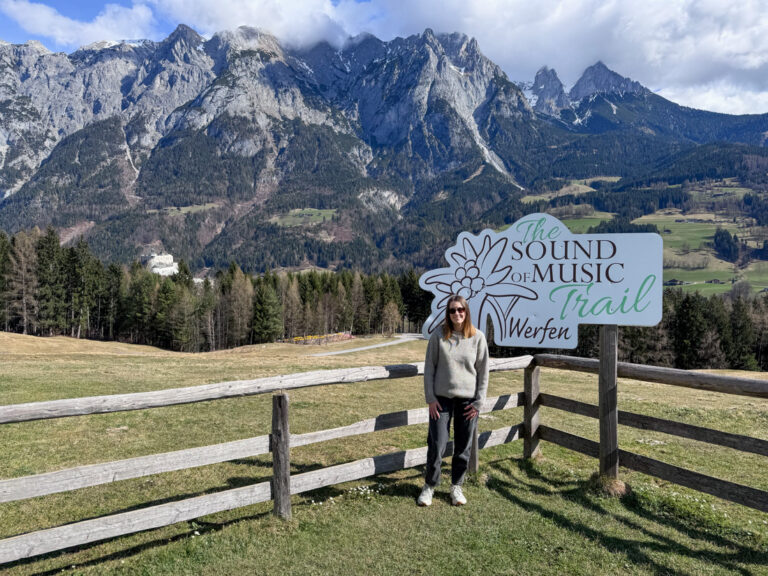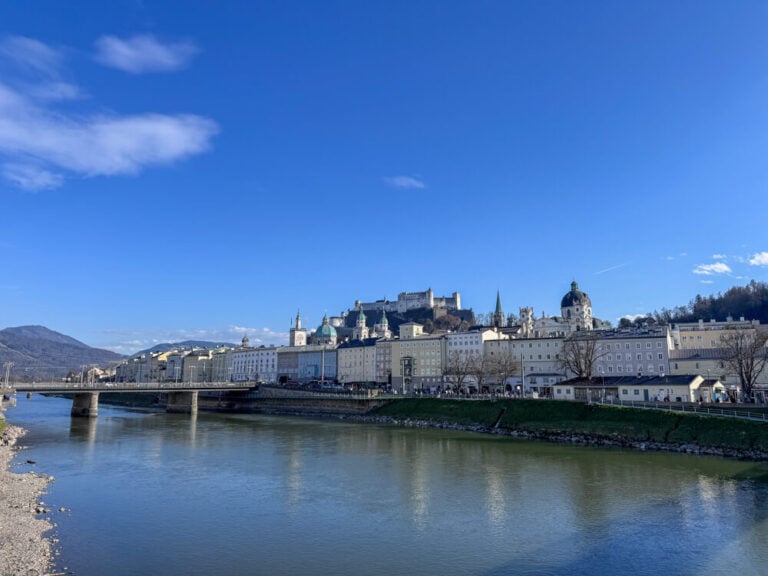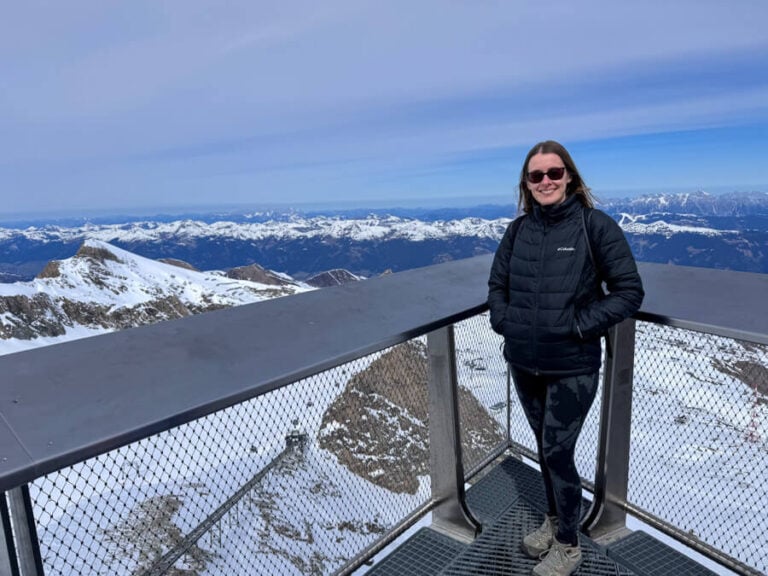How to Spend Two Days in Vienna: Itinerary & Things to Do
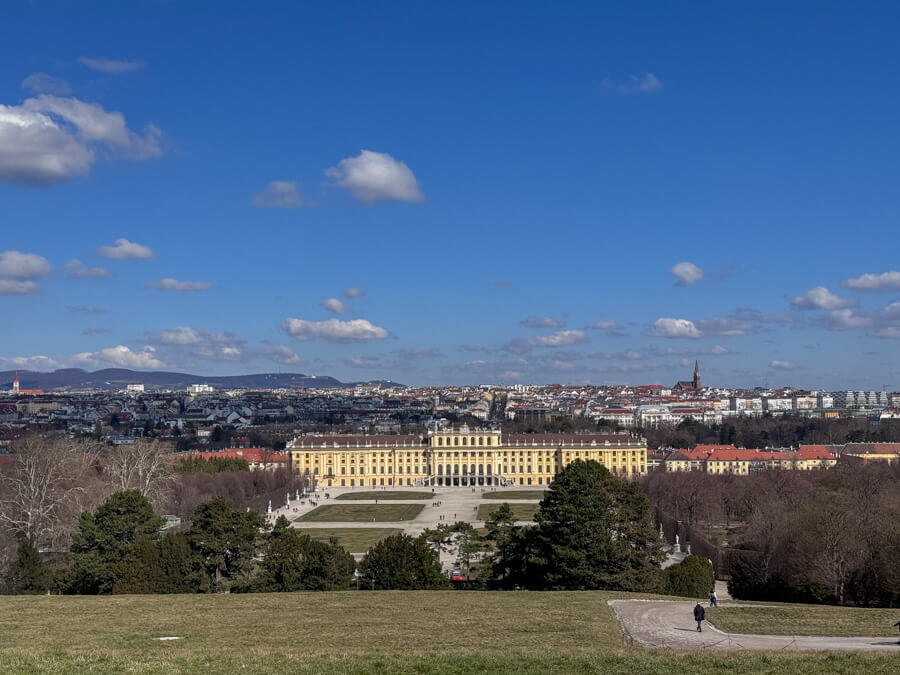
Vienna has always been a city I wanted to visit. As Austria’s capital, Vienna is one of those places that offers a little bit of so many things, from incredible history to world-class art and music; the city is an absolute must for culture and history buffs.
I finally got to visit with my mum as part of a bigger trip to Austria, and we spent almost a week based in Vienna and cramming in as much sightseeing as possible. Similar to cities like London, Vienna is one of those places where you could spend weeks exploring and still not see it all.
That being said, Vienna is also the perfect European getaway for just a couple of days or a long weekend.
Below, I’ve shared the ultimate two-day Vienna itinerary, including the best things to do, where to stay and how to get around. I’ve based the itinerary on what I think is worth doing if you only have two days in Vienna, or are looking for the perfect Vienna weekend itinerary.
Of course, two days isn’t enough time to fit in everything, so there will need to be some sacrifices.
Alongside my two-day Vienna itinerary, I’ve included several alternative options and day trips to help you design your perfect Vienna getaway.
Is 2 days in Vienna enough?
This is a tricky one to answer for Vienna. In reality, no, two days in Vienna is not enough time to see all that Austria’s capital has to offer. The city is filled with countless museums and attractions, and you’d only be able to see a very small selection of them in two days.
As I said above, you could spend weeks in Vienna and there would always be another museum to visit, or another cultural event to enjoy.
However, if (like me) you’re not that worried about seeing more than one or two museums, then two days is a good amount of time to get a feel for the city and see the main highlights.
I spent six days in Vienna (plus a day trip to Bratislava), and honestly, I found it a bit too long. But my mum, who is much more into museums and cultural events than I am, struggled to fit everything in.
So, if you want to get a taste of the city, visit the main attractions and perhaps one or two museums, then two days is a reasonable amount of time.
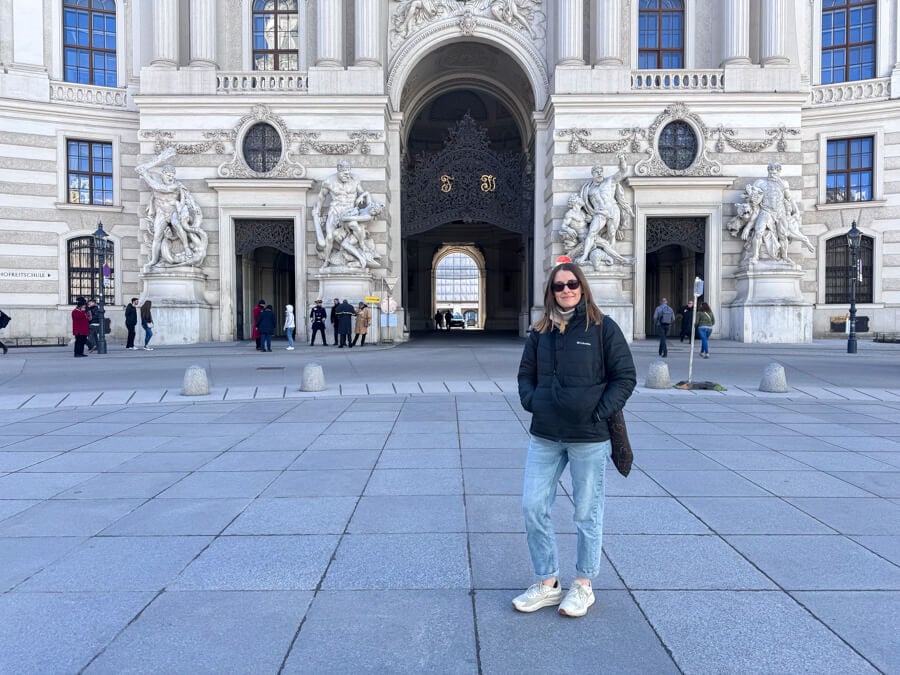
Vienna itinerary: Day one
Morning: Walking tour and explore the Old Town
Begin your time in Vienna with a walking tour of the Old Town. I love joining walking tours when I arrive in a new city as it’s a great way to orientate yourself and learn about the city’s past.
One of the best free walking tours in Vienna is by New Europe Tours. Their classic tour includes many highlights in the city centre, and it only takes two hours. The tour is free but you tip your guide at the end.
If you’d rather explore at your own pace, consider this excellent self-guided walking tour which includes many of the city’s highlights.
Alternatively, here is the exact self-guided walking tour I did on my first day in Vienna.
Stephansplatz | Vienna’s central Square is a great place to kick off your self-guided walking tour of Vienna. Home to St Stephen’s Cathedral, spend some time admiring the Cathedral from the inside and outside. You can climb the tower for a small fee, but I recommend saving this for sunset.
St Peter’s Church | Just off from the Square, you’ll find St Peter’s Church, one of Vienna’s hidden gems. The church is free to enter, and if you’re lucky, you might catch a choir performance.
Ankeruhr Clock | Walk a few minutes to the famous Anker Clock, which is found in Hoher Market. Franz Matsch designed the beautiful clock, and it features a parade of historical figures that “walk” across its face each hour. Don’t miss the Judenplatz Holocaust Memorial, a couple of minutes’ walk away.
Wolf and Cow Playing | Keep your eyes peeled for a medieval mural of a wolf and cow playing backgammon… yes, you read that right. It’s believed the painting dates back to the 1500s. It’s hard to miss, so keep an eye out.
Mozart’s House | Mozart was born in Salzburg but spent a few years living in Vienna. His house has now been turned into a museum.
Vienna State Opera | One of the most famous Opera Houses in the entire world, the Vienna Opera House is known for its stunning architecture and performances by some of the world’s best opera singers. You can book a tour to explore the inside (more on this below), watch a performance, or admire it from the outside.
Hofburg Palace | One of Vienna’s most beautiful buildings, Hofburg Palace is one of the biggest palace complexes in the world. It’s home to the Spanish Riding School and several museums, including the Sisi Museum, Imperial Apartments, and Imperial Treasury. You can head inside or admire the building from the outside.
Vienna City Hall | After exploring Hofburg Palace, walk over to Vienna City Hall, an impressive neo-Gothic building. You can book a free tour in advance if you want to go inside.
Palais Daun-Kinsky | One of Vienna’s hidden gems, this beautiful building is free to explore. Inside, you’ll find grand staircases lined with marble, an impressive ceiling with incredible decorations, and several rooms with Baroque interiors.
Cafe Central | This is one of the most famous coffee houses in Vienna. Its 19th-century interior has some beautiful architecture and decoration, and the menu ranges from light bites to bigger meals. There are limited tables to reserve online, but they also operate on a walk-in basis. When we arrived, the queue was way too long to wait, but it’s a pretty building to view from the outside.
Stadtpark | This gorgeous park is a great place to escape the city chaos. Although it’s in the heart of the city, it feels like a bit of an escape. There are several fountains, ponds, and benches to relax on.
Hundertwasserhaus | This eccentric apartment building was designed by the artist Friedensreich Hundertwasser, and features uneven floors, irregular windows and bright colours. It feels a bit like you’re looking at a fake building at a theme park. It’s quite the walk to get to, but include it if you can.
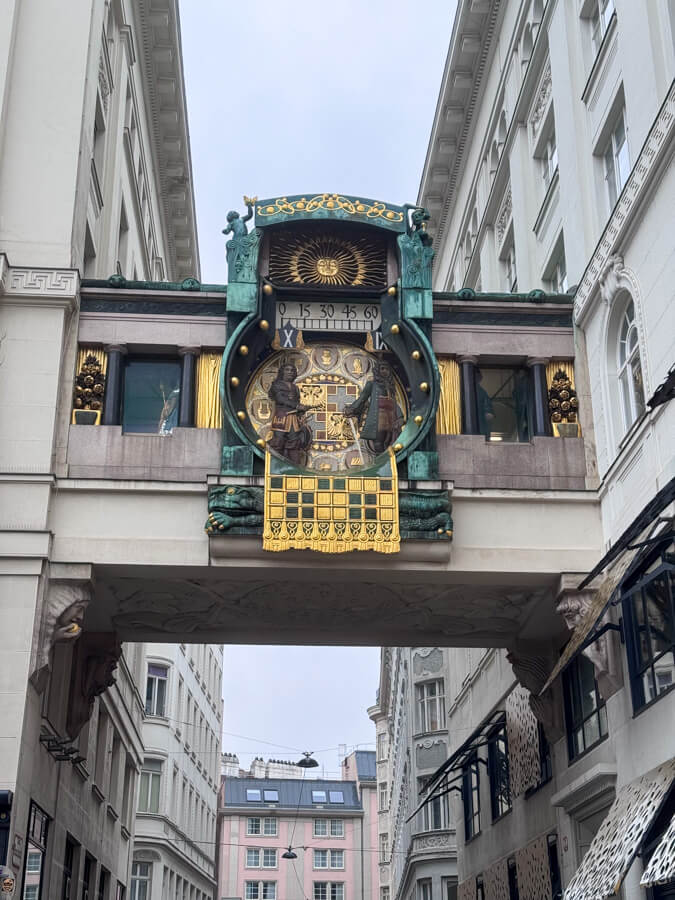
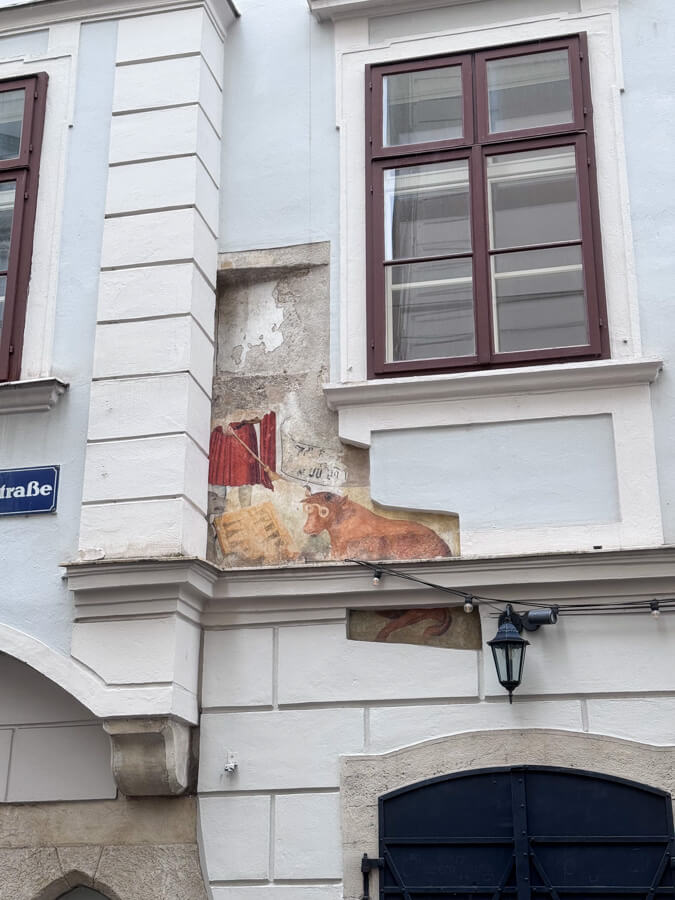
Afternoon: Visit the many museums or galleries, climb St Stephen’s Cathedral
Vienna is a haven for history, art and museum lovers. It seems that around every corner there’s a different gallery, museum or historic site.
I could write a whole article on the best museums in Vienna, but instead, here are a few of the most popular ones to consider visiting (that don’t appear elsewhere on this Vienna itinerary).
If you only have time to visit one museum in Vienna, I recommend the Kunsthistorisches Museum. This museum is one of the most important and famous museums in the entire world, and it’s home to an array of artwork and artefacts spanning from Ancient Egypt to the Renaissance.
Inside, you’ll find works by iconic artists, such as Pieter Bruegel the Elder, Raphael, and Titian. The building itself is also very impressive, with a grand marble staircase, incredible ceilings and endless rooms to explore. It’s a really interesting place to walk around.
I’m not always the biggest fan of museums, but I did really enjoy this one, and I highly recommend including it on your Vienna itinerary. I’d recommend allowing for at least two hours inside, but you could easily spend longer.
If you’re looking for something more modern, the Leopold Museum in the MuseumsQuartier is a must. It houses the world’s largest collection of works by Egon Schiele, as well as pieces by Gustav Klimt and Oskar Kokoschka.
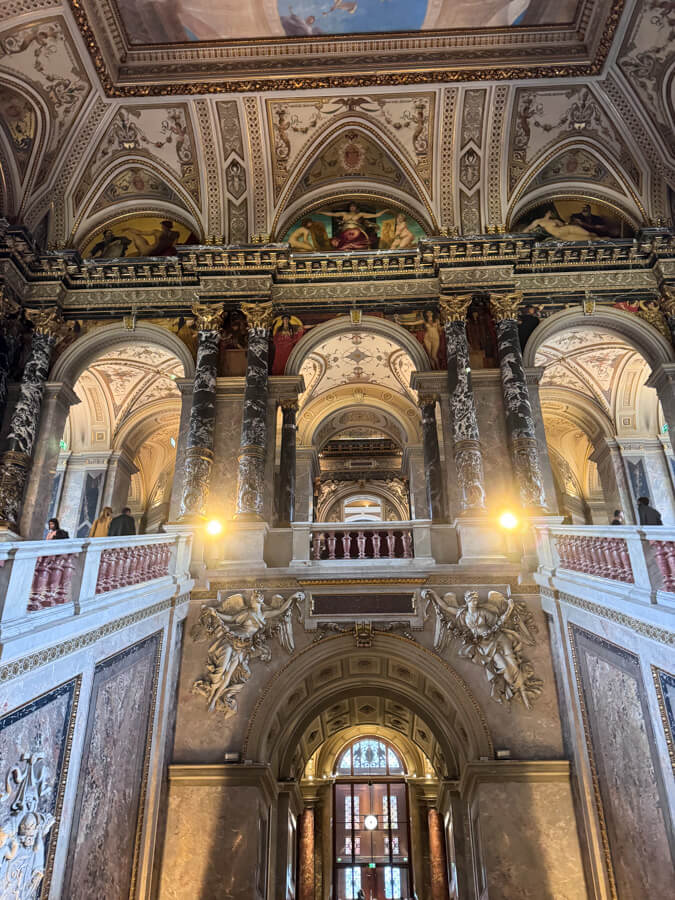
The Albertina is another famous and popular museum in Vienna. It is known for its vast collection of artwork, including works by Dürer, Michelangelo, and Picasso, as well as its impressive selection of modern and contemporary pieces.
Vienna is also home to MuseumsQuartier, one of the world’s largest cultural sites and home to over 50 different cultural initiatives, including galleries, museums and interactive workshops. The campus is well worth having a wander around, even if you don’t go inside anywhere. The Museum of Natural History Vienna is another popular museum choice, especially for those with young children.
As you can see, narrowing down which museums to visit in Vienna can be a challenge. If your primary reason for visiting Vienna is the museums, I’d suggest trying to spend more than a couple of days there.
End your afternoon by climbing the famous St Stephen’s Cathedral (Stephansdom Cathedral) South Tower. There are over 300 steps to the top, but you’ll be rewarded with beautiful views of the city. It’s the perfect sunset spot.

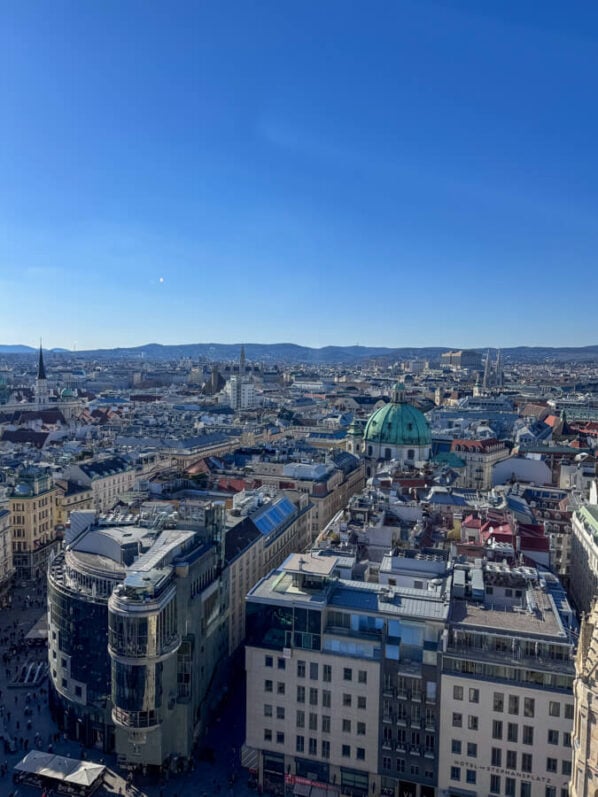
Evening: Watch an opera performance
Vienna is one of the best places in the world to watch an opera performance.
The city has three main opera houses, including the Vienna State Opera, the Volksoper Vienna, and the Theatre an der Wien. However, venues all around the city host various concerts throughout the year.
If you can, I recommend booking to watch a concert at the Vienna State Opera House. While expensive, it’s one of the most prestigious opera houses in the world. You can book in advance or try and get last-minute tickets on the day.
If opera isn’t your thing, consider an evening cruise along the Danube or an evening food tasting tour. This Vienna food tour is highly reviewed and includes a mix of foods and drinks, including the classic Wiener Schnitzel.
Vienna itinerary: Day two
Morning: Explore Schönbrunn Palace
Start the second day of your two day Vienna itinerary by visiting one of the city’s most impressive attractions.
Schönbrunn Palace is one of Vienna’s most popular things to see and for good reason. I’ve seen people say it’s overrated, but I personally found wandering the gardens to be one of my highlights from Vienna.
The former summer residences of the Habsburgs, Schönbrunn is a stunning Baroque palace, and arguably one of the most important residences in all of Austria.
You can pay to go inside and explore the museum and incredible rooms, or admire the architecture from the outside and explore the gardens.
The palace gardens are some of the most impressive I’ve ever seen, and I spent a good couple of hours exploring the many gardens and pathways.
You can also walk up a short hill for beautiful views back over the palace and Vienna.

Afternoon: Grab some food, visit the Opera House and the Spanish Riding School
After spending the morning exploring, head back to the city centre and consider stopping off at the famous Naschmarkt.
This outdoor market is filled with food vendors selling all types of cuisine (note that it is closed on Sundays). From Schönbrunn Palace, you can take the U4 line back to the city and jump off at Kettenbrückengasse, where you’ll find the market.
I was a little overwhelmed by the sheer number of options available at the market. Indian, the best falafel I’ve ever had, hot dogs (including veggie), Vietnamese, Austrian… there is so much to choose from and it’s the perfect lunch spot.
There are also several bars and restaurants for those looking to sit down for something a little more formal.
From here, you can walk back into the city centre via the MuseumsQuartier, and then spend your afternoon exploring one of the city’s many historic attractions or visiting another museum.
I highly recommend visiting the Vienna State Opera House while you’re in Vienna. The informative tours take you around the historic building, and you’ll get to sit in the hall and watch the staff prepare for the night’s performance.
You’ll need to book your tickets well in advance as they quickly sell out. The tour takes a couple of hours and afterwards, consider visiting the Albertina Museum which is opposite.
Another option is the Spanish Riding School, a world-famous venue where you can learn about the riders who perform dressage on Lipizzaner stallions, and meet the horses.

Evening: Have some traditional Austrian food
Don’t leave Vienna without trying some traditional Austrian food. I recommend joining a food tour, such as this one, which includes several dishes and drinks.
Alternatively, try one of Vienna’s famous restaurants. Some popular choices, all serving up traditional Austrian food, include:
- Gastwirtschaft Steman (my friend highly recommends this place)
- Schnitzelwirt
- Figlmüller (home to the original Wiener Schnitzel – expect long queues)
- Schachtelwirt
- Beisl in der Sigmundsgasse
Other things to do in Vienna
Explore Belvedere Palace
With beautiful gardens on the outside and art and history exhibitions on the inside, Belvedere Palace is a popular attraction in Vienna.
This is probably a little controversial, but I found Belvedere Palace to be a little overrated. Sure, the grounds are pretty and the inside is interesting, but Schönbrunn Palace has much more to offer (in my opinion).
Side note: I visited in the winter when the gardens were hardly blooming!
If you can squeeze Belvedere into your itinerary, that’s great, but don’t worry too much if you can’t.
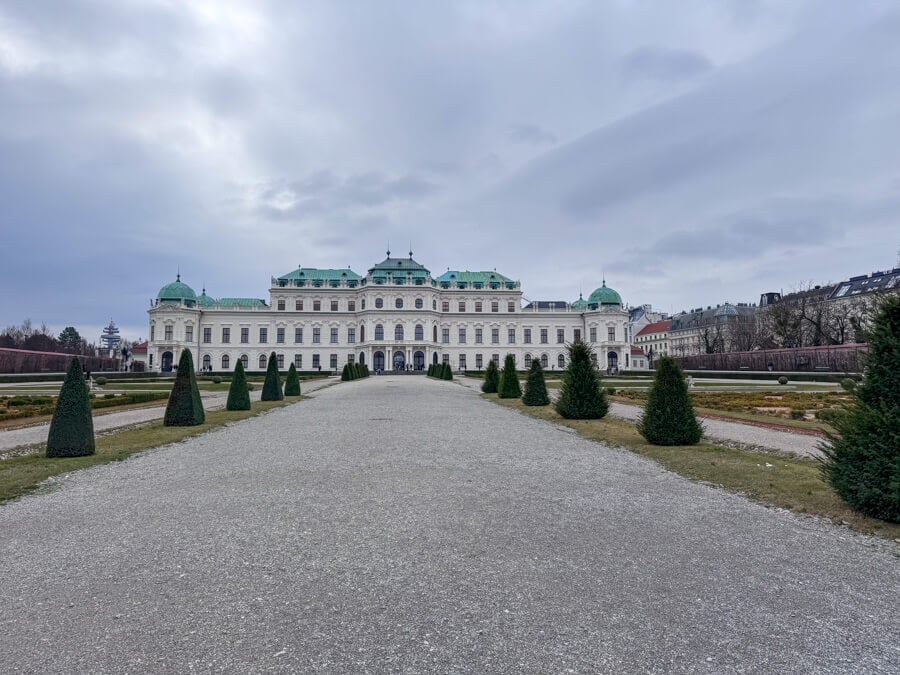
Admire the views from the Danube Tower
Standing over 250 metres tall, the Danube Tower offers panoramic views of the city and the Danube River.
You can buy a ticket to the observation deck, or have a meal at the famous Turm Restaurant. This unique restaurant rotates so you’ll never get bored with the views while you enjoy a meal.
Visit Mozart’s House
Although Salzburg is the birthplace of Mozart, Vienna is where he spent time composing some of his most famous works. You can visit the Mozarthaus Vienna, his former residence near St. Stephen’s Cathedral, to explore exhibitions about his life and music.
Visit Parter Vienna
Prater Vienna is a historic amusement park in the city. It’s home to the famous Wiener Riesenrad, a Ferris wheel that opened back in 1897.
The park is a little out of the way and receives mixed reviews, but it’s worth considering if it’s the type of thing you enjoy.
Explore the Vienna Library
This hidden gem in Vienna is one of the most beautiful libraries I’ve ever seen.
As Europe’s largest Baroque library, it’s home to over 200,000 history books. The star of the show, the State Hall, feels a bit like stepping into Hogwarts.
If you want to go inside, you can book entry tickets or guided tours on the official website.
Visit one of the World’s Smallest Vineyards
Vienna is home to one of the world’s smallest vineyards, which produces the Austrian wine Wiener Gemischter Satz.
Located at Schwarzenbergplatz 2 right in the city, it’s walkable from Belvedere Palace.
There are also several wine-tasting options in Vienna, including this popular tour in a private wine cellar.
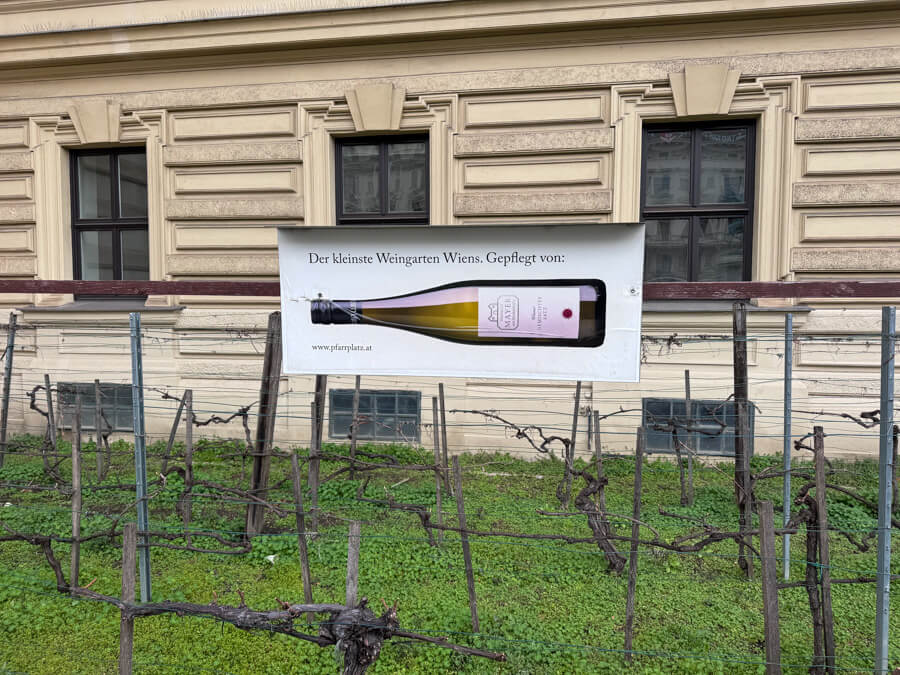
Day trips from Vienna
If you have some extra time in Vienna, consider going on a day trip to explore further afield.
Here are some of the best day trips from Vienna.
Bratislava (Slovakia)
Slovakia’s charming capital city, Bratislava, is only an hour away by train, making it the perfect day trip.
Although it’s close, Bratislava has a completely different feel from Vienna, and I absolutely loved spending the day in the city.
Check out my guide to visiting Bratislava on a day trip from Vienna.
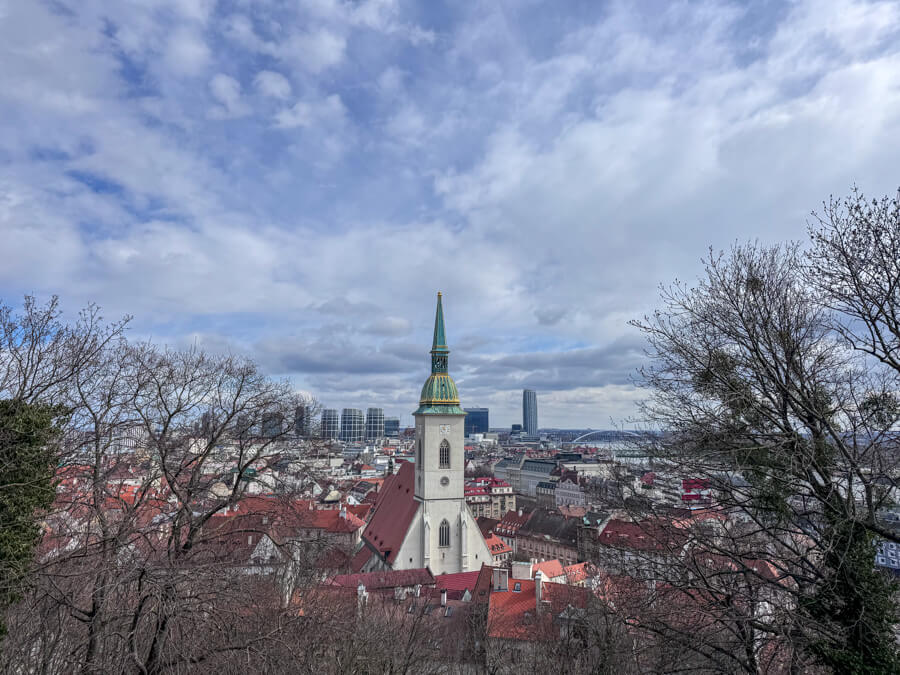
Melk Abbey
Another popular day trip from Vienna, the beautiful Melk Abbey is a must for those who love Baroque architecture. Just over an hour west of Vienna by train or boat along the Danube, Melk Abbey is a fantastic day trip. Inside, you’ll find magnificent halls, a stunning library, and sweeping views of the Wachau Valley. It’s a must for architecture lovers and history buffs alike.
Hallstatt
Hallstatt is another popular place to visit in Austria, and while it’s worth more than a day trip, it’s possible to see most of the town in a day.
This beautiful mountain village is one of the most photographed and recognisable spots in Austria, and with an incredible mountain backdrop, it’s absolutely stunning.
If you’re opting to visit Hallstatt on a day trip, I’d recommend joining an organised day tour such as this one.
Salzburg
Salzburg is just over two hours on the train from Vienna, so it’s a bit of a push as a day trip, but it’s doable.
Known for the Sound of Music, its beautiful Old Town, being the birthplace of Mozart and its fantastic mountain views, the historic city of Salzburg is a charming and varied destination.
I spent several days in Salzburg and much preferred it to Vienna, so try to spend longer there if you can. It has so much to offer and you will struggle to see everything in a single day.
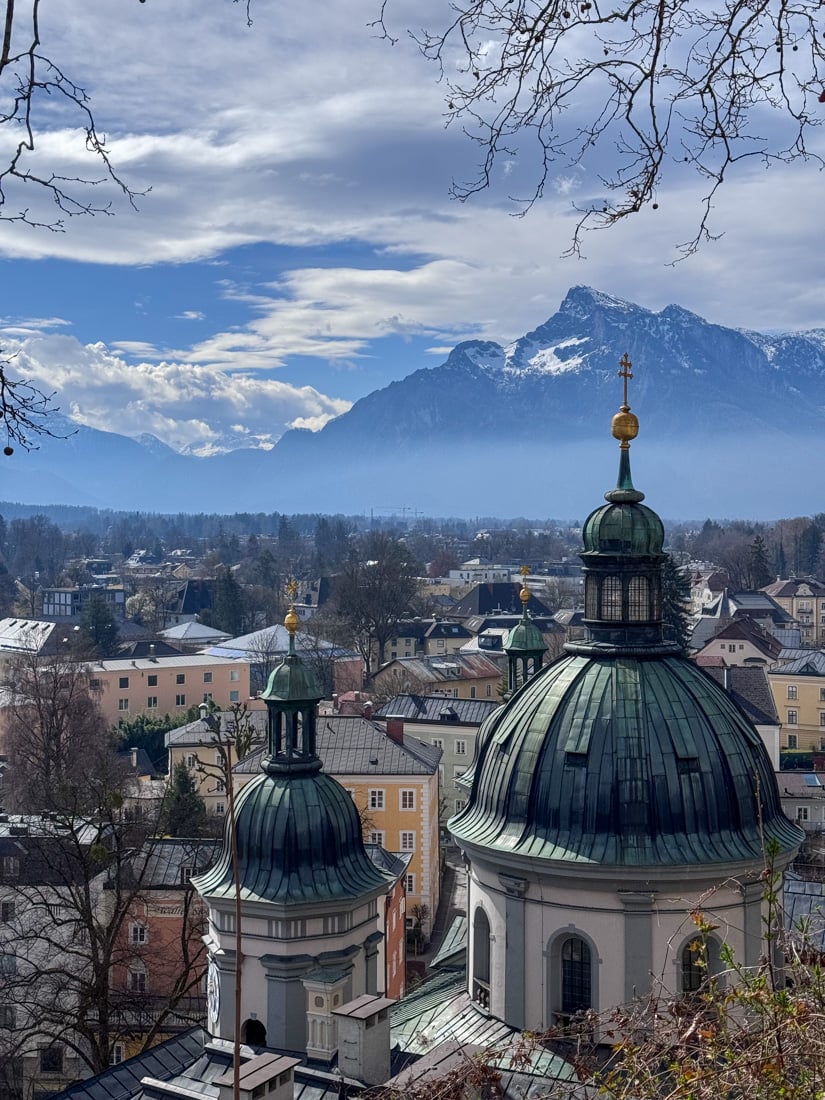
Budapest
Budapest is one of my absolute favourite cities in Europe, and you can reach it in about 2 1/2 hours on the train from Vienna.
Spend your day relaxing in the thermal baths, exploring the streets of Buda and trying one of the many incredible coffee shops.
The Vienna City Card or Vienna Pass
There are a couple of options when it comes to choosing a city pass for Vienna. Traditionally, these cards include entrance to several attractions, and sometimes even public transport.
The Vienna Pass
The Vienna Pass is the most popular option, and allows you to customise your pass to suit your itinerary.
There’s the option to buy a single pass, which includes entry to the main sights, or alternatively, you can select a flexi pass, which allows you to select a handful of attractions to visit.
There’s also the option to add a hop-on, hop-off bus pass, as well as add public transport to your card.
Vienna City Card
The Vienna City Card is another popular option, and includes public transport and discount entry to many of the sights.
Are they worth it?
It depends! I would say the Vienna Pass is better value for money, and if you’re planning to visit more than a couple of the museums, then yes, it’s likely you will save money.
I would add up the entry fees for all the places you want to visit and see if buying the card saves you money.
For example, a two-day Vienna Pass (without transport) is €125 (August 2025), which is significantly higher than many of the entry fees. However, if you’re planning to visit a selection of the galleries and museums, it may very well be worthwhile.
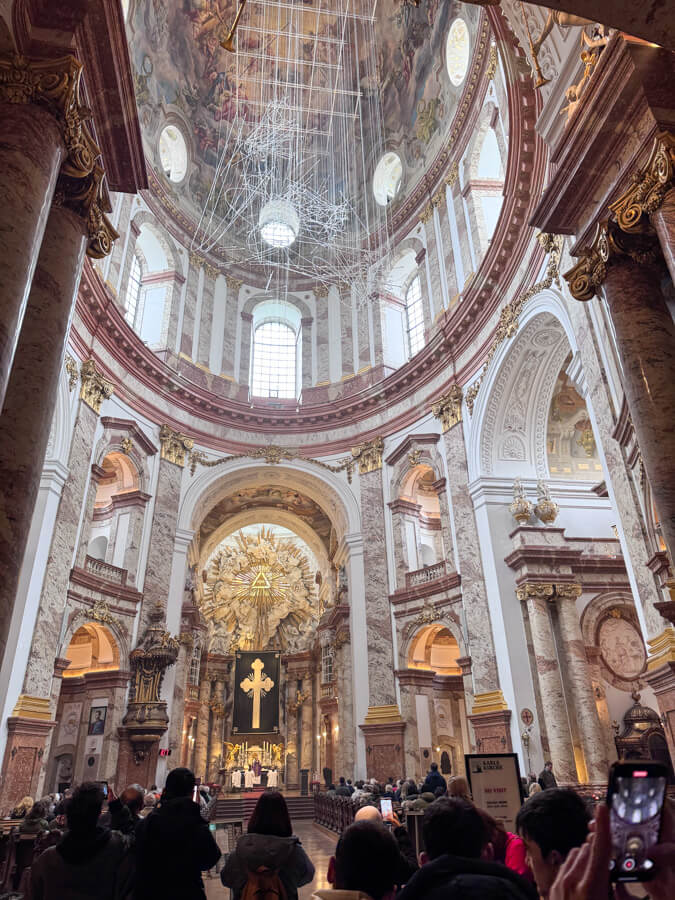
Where to stay in Vienna
Vienna is a big city, and there are several options when it comes to choosing ideal places to stay.
With only two days in Vienna, I would recommend staying as central as possible. This means you’ll be close to the main attractions, be at the heart of the action, and won’t need to waste precious time travelling around the city.
Innere Stadt
If you want to be at the heart of it all, Innere Stadt is a great place to stay in Vienna.
Right in the city centre, you’ll have the city’s main attractions right on your doorstep. While this will be ideal for some, others may find it a little busy and overwhelming.
The centre of cities and budget don’t always go hand-in-hand, and there aren’t a whole lot of budget options for this area of Vienna.
However, if you have the budget, there are some fantastic hotels to choose from.
The Guesthouse Vienna is right in the heart of the city. It offers charming and modern rooms, and you’ll have everything on your doorstep.
For those who want to experience something traditional, consider the Grand Hotel Wien, one of Vienna’s most famous hotels.
Boutique Hotel Das Tigra is another popular option, offering a range of rooms from standard to suites.
Hotel Wandl is another excellent option, and great for those who don’t want to splurge too much on accommodation.
Mariahilf (The 6th District) & Neubau (The 7th District)
Close to the city centre, Mariahilf is an excellent place to stay. You’ll be within walking distance of the main attractions, there will be incredible restaurants and bars on your doorstep, and you’ll also be close to the Naschmarkt.
I had a wander around this area and loved it. It felt close enough to the centre, had plenty of shops and restaurants, and seemed to have lots of character.
Right next door is Vienna’s 7th District, Neubau. This area of the city has a few more trendy bars, coffee shops and designer shopping outlets.
The only downside of these areas is that they can be very busy and also a little expensive. If you prefer to escape the hustle and bustle at the end of the day, consider a different area (keep on reading to find out where).
Budget | For those on a real budget, consider Wombats City Hostel, a popular European chain with modern dorms and social events. Jo & Joe is another hostel option with private rooms also available.
Mid-range & Luxury | For a taste of luxury, consider the Hotel Beethoven, right on the doorstep of Naschmarkt and close to many of the top attractions. For something modern, consider Hotel Gilbert.
Leopoldstadt (The 2nd District)
Leopoldstadt is my favourite place to stay in Vienna. This residential area, located across the Danube Canal, offers fantastic accommodation options and is home to numerous trendy restaurants and bars.
It’s far enough away from the city centre that you don’t feel like you’re in a big city, but it’s close enough to the main attractions that you won’t need to travel far. The area is also home to the Prater Theme Park.
If you do opt for this area, try to choose a hotel close to the canal. The city centre is walkable in about twenty minutes from here, but you can also jump on the subway line.
Although a little bit further away from the city center, it’s still well-connected to the main Central Train Station.
Budget | Steiner Residences is an excellent option in the area. The apartments come with a kitchen, living area and a nicely sized bedroom. It’s the perfect option for those looking to self-cater. I stayed here for almost a week and loved it. Alternatively, consider the Space Home Apartment, an affordable pod-style hotel.
Mid-range & Luxury | Close to the subway station and with a rooftop bar, the modern Radisson Red Hotel is an excellent place to stay in Vienna. The rooms are modern, and there’s also an on-site gym and several restaurants. You could also consider the highly rated 4 Star Henriette Stadthotel.
Wieden (The 4th District)
Wieden is another fantastic place to stay in Vienna. Although it’s a little bit further from the centre, you’re still within walking distance of a lot of the attractions, and there’s a great range of accommodation options.
Budget | The Adina Serviced Apartments are a great choice for those who want a kitchen to self-cater. My friend stayed here and loved it.
Mid-range & Luxury | The Saint Shermin is a popular choice in the 4th District. It’s modern, stylish and even comes with a champagne breakfast. Hotel Indigo is slightly cheaper, but the building is beautiful and there’s also an on-site gym.
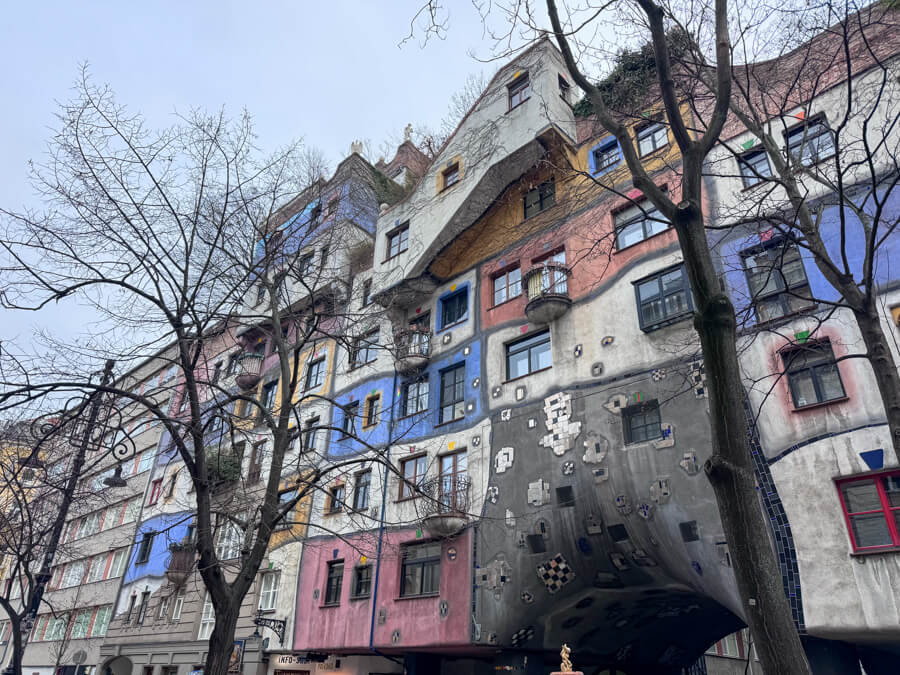
How to get around Vienna
Depending on where you stay in Vienna, you’ll likely need to use public transport to get around at some point while in the city.
The easiest way to get around is to use Vienna’s subway system, also known as the U-Bahn. You can plan your journey using the Wiener Linien website, as well as purchase tickets. However, it’s easy enough to buy tickets once you get to the station.
You have the option to buy a single ticket to take you from A to B (€2.40), or you can buy a 24, 48 or 72-hour travel pass.
There are no ticket barriers at the station, but tickets are sometimes checked, so it’s essential to buy your ticket. You also sometimes need to validate your ticket before getting on the train. You will see a small blue box at the platform entrance (or next to ticket machines) – put your ticket inside until you hear it click.
Vienna also has a tram and bus system. You can buy the tickets at subway stations, some tram stops and online.
I mostly use Google Maps to navigate new cities and figure out the best way to get around. Vienna also has Uber.
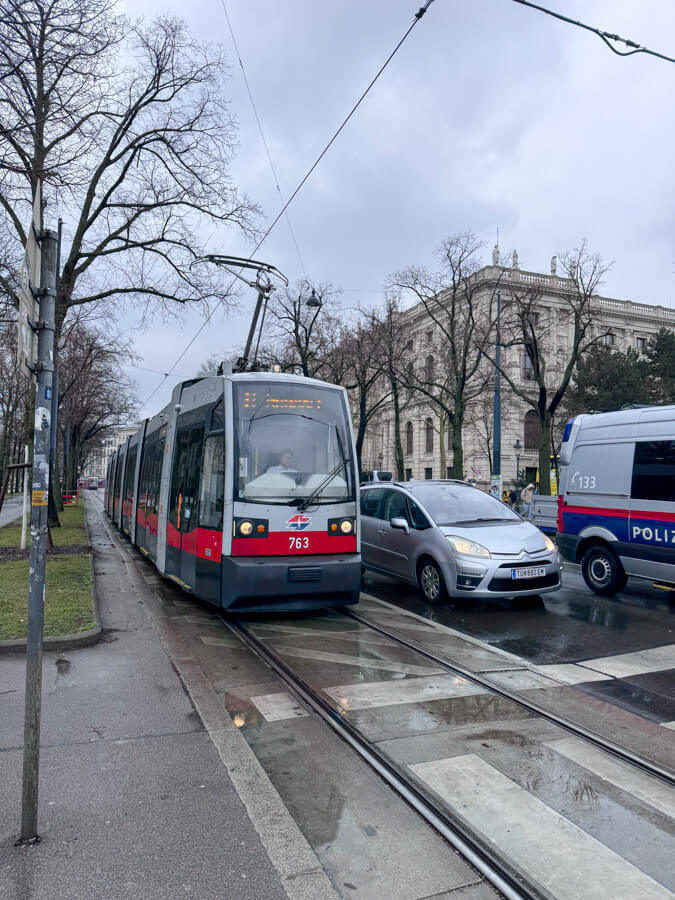
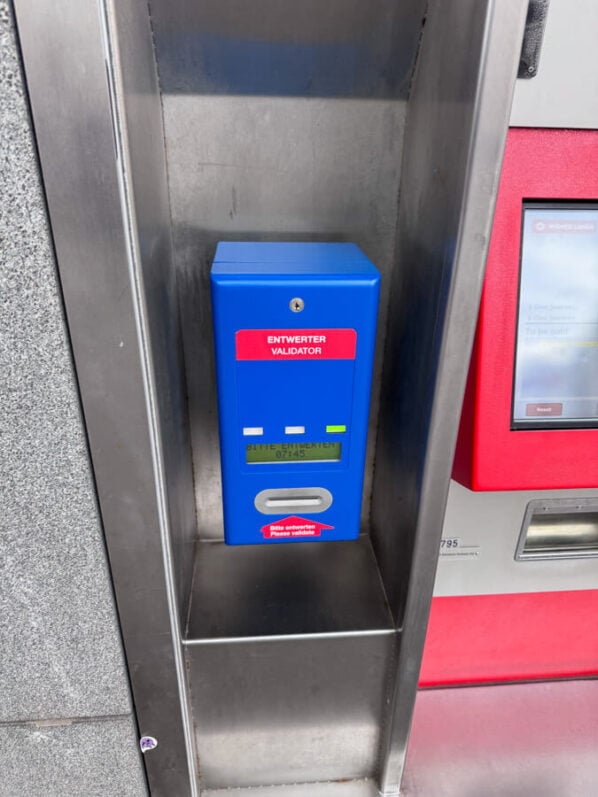
Best coffee in Vienna
We decided to self-cater for much of our trip to Vienna. Mainly because it’s not the cheapest of cities, and I had more food places to try later in my trip.
However, I did make it my mission to try as many coffee shops as possible while in the city.
Here are a few of my favourite coffee spots in Vienna.
Nook Cafe | If you’re visiting Schönbrunn Palace, don’t miss grabbing a drink at Nook Cafe. If I had to pick the absolute best coffee I had in Vienna, it would be from here. I loved it so much that I went back for a second.
Kaffein Home Base | Right by the Old Town, this was another favourite coffee shop in Vienna. It’s warm, welcoming, cosy and most importantly, it has fantastic coffee. We also had a delicious pastry.
Jonas Reindl | I stumbled across this place when another coffee shop was too busy. It’s a small place, but the coffee was fantastic and the staff were incredibly friendly.
No Panic Coffee | If you want to grab a quick coffee and a bite to eat, No Panic is an excellent option. They have a mix of savoury and sweet options (the carrot cake is fantastic), and I loved the coffee. They have a couple of locations around the city.
Kaffemik | This excellent coffee shop is a little out of the way, but it’s well worth visiting if you enjoy superb coffee. It’s small, but it has everything you could want from a cafe, including tasty pastries!
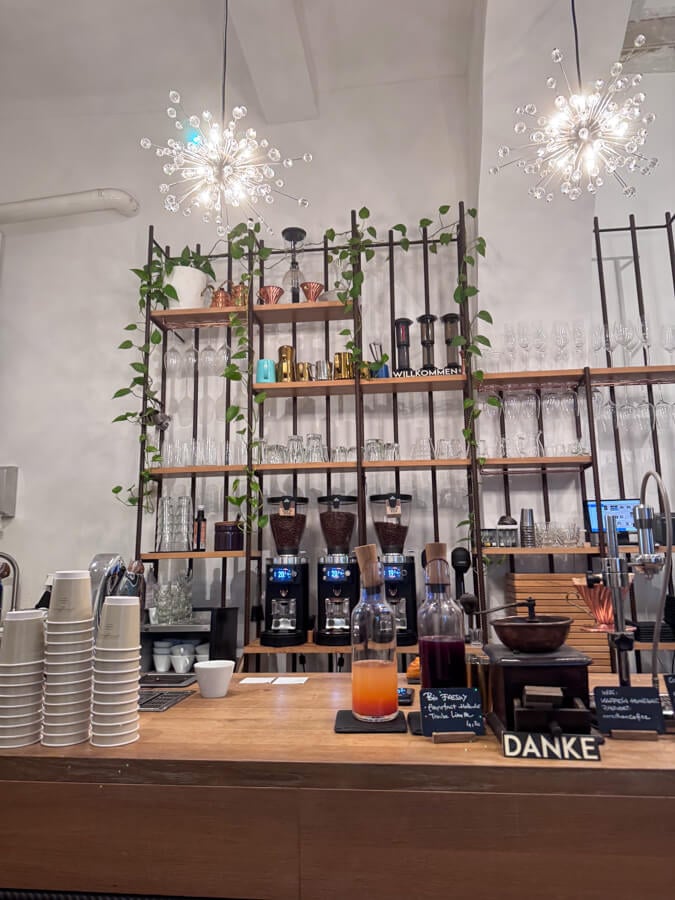
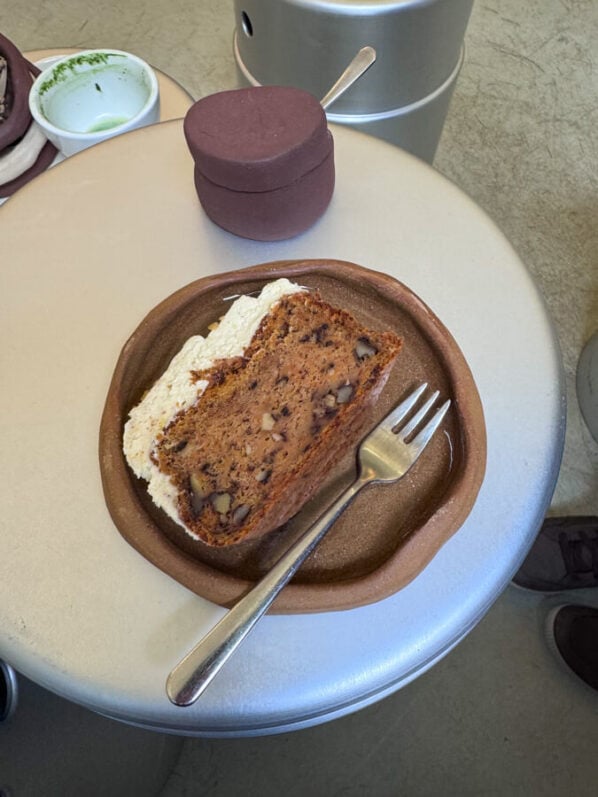
Is Vienna worth visiting?
If you love lively European cities, enjoy museums and want to learn more about Austrian and European history, then Vienna is undoubtedly worth visiting.
This popular city is the perfect European getaway for those who want a good balance of sightseeing, history and culture. It’s also well-connected to other European cities such as Bratislava, Salzburg, Prague and Budapest, making it a great city to build into a bigger Europe itinerary.
I always like to be honest on this blog, and while I did enjoy visiting Vienna, I can’t say it was my favourite city of all time. I can’t quite put my finger on what didn’t click for me. However, the vibe of the city reminded me quite a bit of other European cities, like London, and I didn’t find there was a whole lot to do away from the museums.
(Apparently the nightlife is great, but that’s not my vibe…)
Of course, that’s just my opinion. And if you’re interested in world-famous artwork, opera and visiting some of the world’s most famous museums, then I have no doubt you’ll love Vienna.
But if you’re like me and can only manage a couple of museums, I wouldn’t recommend spending more than a couple of days in Vienna.
I personally much preferred Salzburg, which is about two hours from Vienna. I found the city to be much more of my vibe; it’s quieter, close to the mountains and has beautiful architecture.
While Vienna might not have stolen my heart, I do think it’s a wonderful city with lots to offer.

